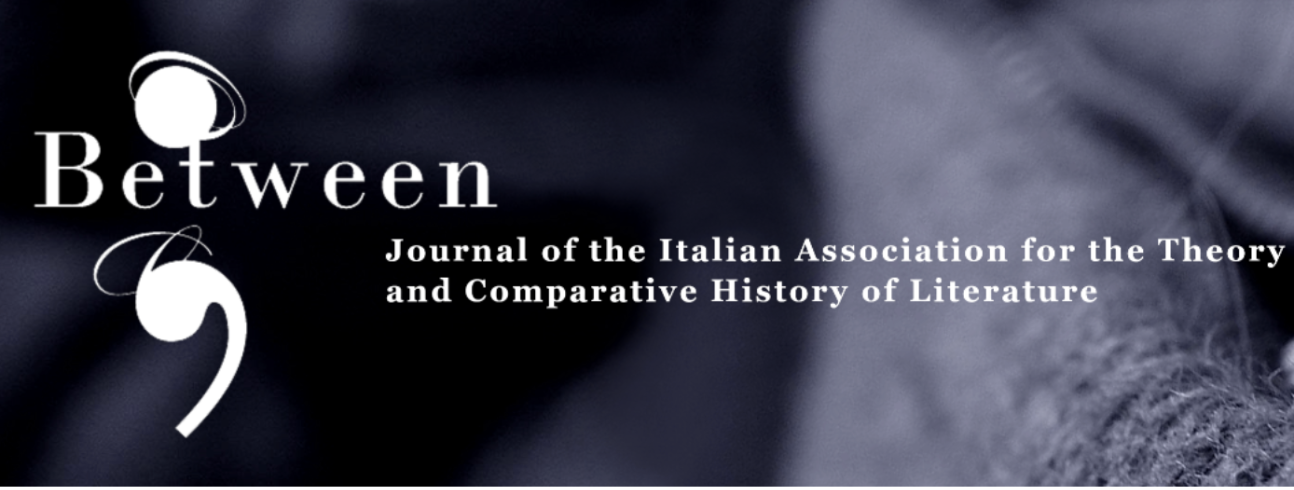
Between (Journal of the Italian Association for the Theory and Comparative History of Literature - Compalit)
To a certain extent, the experience of reading has always also been a visual experience, starting from the typographic arrangement of the characters on the page up to the images that often accompanied the texts. In particular, between the eighteenth and twentieth centuries the number of illustrated novels is very high in every sphere of the literary field: fleurons, cul-de-lampes, cartoons, and full-page images segment and enhance the writing of many fictional narratives.
Quite often, these are publishing choices (and they are clearly part of wider commercial plans) which have inevitable aesthetic implications, especially when the authors take actively part into the drawing process or create the drawings for their texts: Lewis Carroll illustrates the story of Alice in Wonderland in his manuscripts, and only later entrust the project to Sir John Tenniel; Charles Dickens’s The Pickwick Papers was initially conceived by Chapman and Hall Publisher as a series of texts that were to “illustrate” Seymour’s drawings. Since then, all Dickens’s novels were accompanied by images; Thackeray draws his own illustrations for Vanity Fair; Mark Twain writes all his novels aware that they will be illustrated.
The examples could go on, showing to what extent the history of the novel is also the history of its illustrations. Therefore, a historical-theoretical perspective that investigates the tradition of the modern novel cannot but benefit from the contributions that come from the studies of visual culture.
It is no coincidence that in recent years, in the wake of the iconotextual studies, research in this field flourished, especially in the French- and English-speaking areas. The monographic issue “The Illustrated Novel between the 18th and 20th Century” fits into this field of studies. Starting from the features of the category of “illustrated novel”, which is here considered both as a particular case of iconotextuality (in which text and image have the same referent) and in terms of literary genre, this issue proposes to think about some focal questions:
—Theoretical and methodological aspects: the definition of “illustration” within a fictional text; study and analysis categories; specificity of the verb-visual rhetoric that characterises the illustrated novel; the concept of authorship in relation to works originated from collaborations; the double talent; the function of frontispieces; the reading processes; theoretical considerations on illustrative macro-trends; aesthetic issues regarding the relationship between word and image, and the debate on the danger of the image within literary texts, especially in the nineteenth century.
— Possible “traditions” of the illustrated novel: national and international macro-trends; reception, contamination, and influences in European and North-American production.
— The publishing system: the role of the publisher in the illustrative project, the marketing, the target audience, the bookseller market, the dissemination, the technical possibilities of image printing.
— Comparative studies on thematic or formal issues.
— Case studies from a theoretical-comparative perspective on the main illustrated novels published in Europe or North America between the eighteenth and twentieth centuries.
*
For more detailed information or to assess the relevance of their proposal, interested parties are kindly requested to contact the editors before sending their contributions. Proposals (papers potentially ready for publication together with their abstracts and metadata) must be sent by 10 November 2022 following the instructions available on the submissions page of Between’s website.
The accepted papers will be published in May 2023.
Proposals in a language other than Italian, preferably English and French, are appreciated and encouraged, especially if they relate to foreign authors.
Contacts: claudia.cao96@gmail.com; giuseppe.carrara@unimi.it; bseligardi@uniss.it